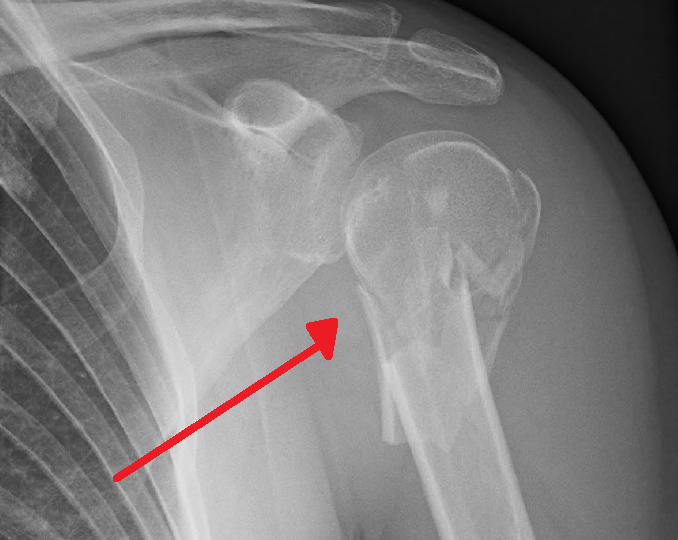
Proximal humerus fractures are one of the more common varieties of bone fracture out there, and with good reason. The upper arm bone, or humerus, connects to the shoulder blade via a shallow socket in the shoulder blade. It’s also an area of the body more at risk during a collision, fall, or stress over time, and is especially common among the elderly. They account, in total, for around 5% of all fractures.
In a proximal humerus fracture, the upper arm bone near the shoulder joint becomes fractured as a result of sudden trauma or stress. We see this, most commonly, in patients who fall over onto an outstretched hand from a standing position. As mentioned, this is fairly common in older patients because where osteoporosis or weakened bones may trigger the fall, as well as being the reason for the fracture itself. Looking at younger patients, we find high-energy traumas to be more typical, such as sports or car accidents.
At Toby Orthopaedic, our patented Pantera® implant system is specifically designed for the treatment of proximal humerus fractures. A low-profile implant with left and right configurations, this ergonomic plate offers a solution that is equal parts practical and comfortable. Because proximal humerus fractures are quite painful, this low-impact implementation was an essential element during the design phase.
Fractures in the proximal humerus area can typically be classified as either nondisplaced or displaced:
- Nondisplaced: In nondisplaced fractures, bone fragments at the fracture site will be separated but not out of their original position. In fractures like this, there is a chance no surgery will be required.
- Displaced: When pieces of bone at the fracture site have been moved or separated from their original position, this is known as a displaced fracture. In order to reposition them, this type of fracture may require surgery.
For someone not in the medical field, it may be difficult to ascertain the symptoms of an actual fracture. We all know a broken or fractured arm is painful, but if you’ve never experienced one before, how do you know how much pain to look for?
Common symptoms of a proximal humerus fracture include:
- Pain
- Swelling and bruising
- Limited range of movement in the shoulder
- Arm numbness and tingling
- Visible deformity in the upper arm
Treatment
Patients with non or minimally-displaced fractures may “get away” with just using a sling. Patients may use these for a period of six weeks or until X-rays show that the healing has taken. Coupled with physical, patients can start to regain motion and strength after they have healed up.
In cases where surgery is necessary, open reduction and internal fixation with a plate and screws like the Pantera® system is the most common procedure. With its thoughtful, low-profile design, this plate system minimizes impingement in this all-important area of your body. With an improved posterior profile, it also focuses on the displacement of the humeral head posteriorly, acting as a buttress.
As a final note, the Pantera® features innovative suture clips which allow for reconstruction of soft tissues and comminuted bone. These help to repair rotator cuff ruptures from humerus fractures, as well as soft comminuted tuberosities. They also function perfectly well as low-profile plate extensions, helping to buttress the tuberosities’ comminuted cortical bone.
For more on the Pantera® system and the rest of our professional implant catalog, get in touch with Toby Orthopaedics today for surgical implants a cut above the rest.

